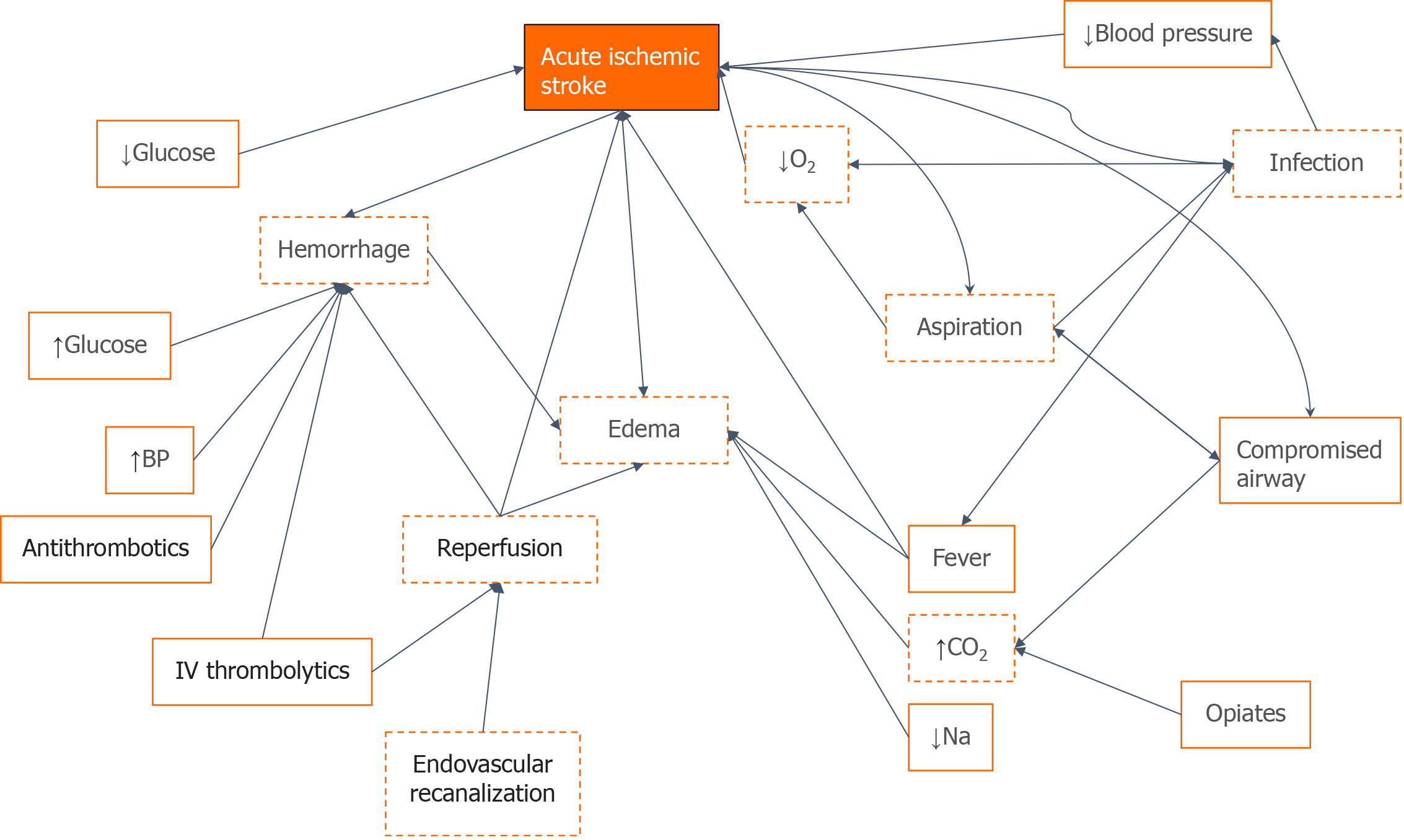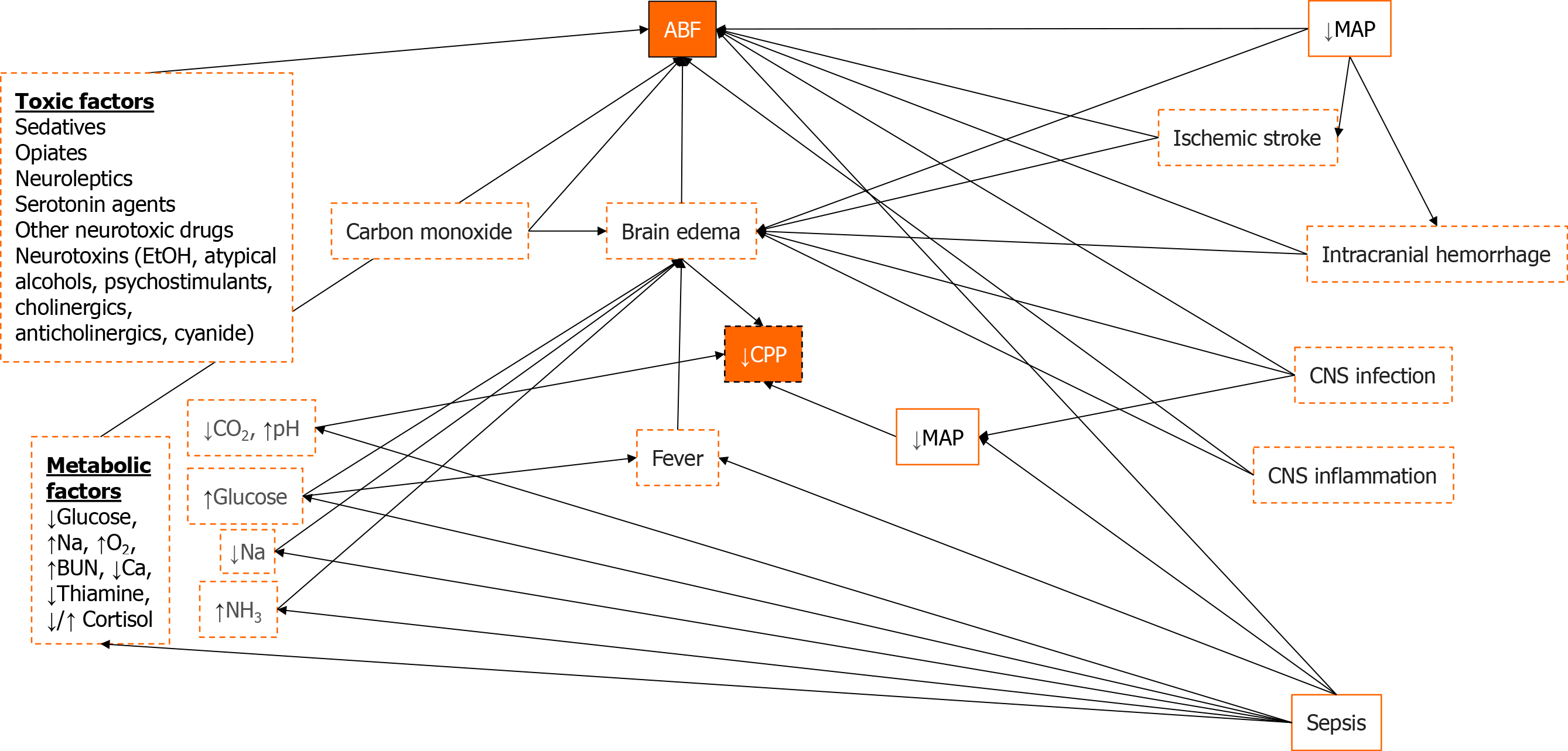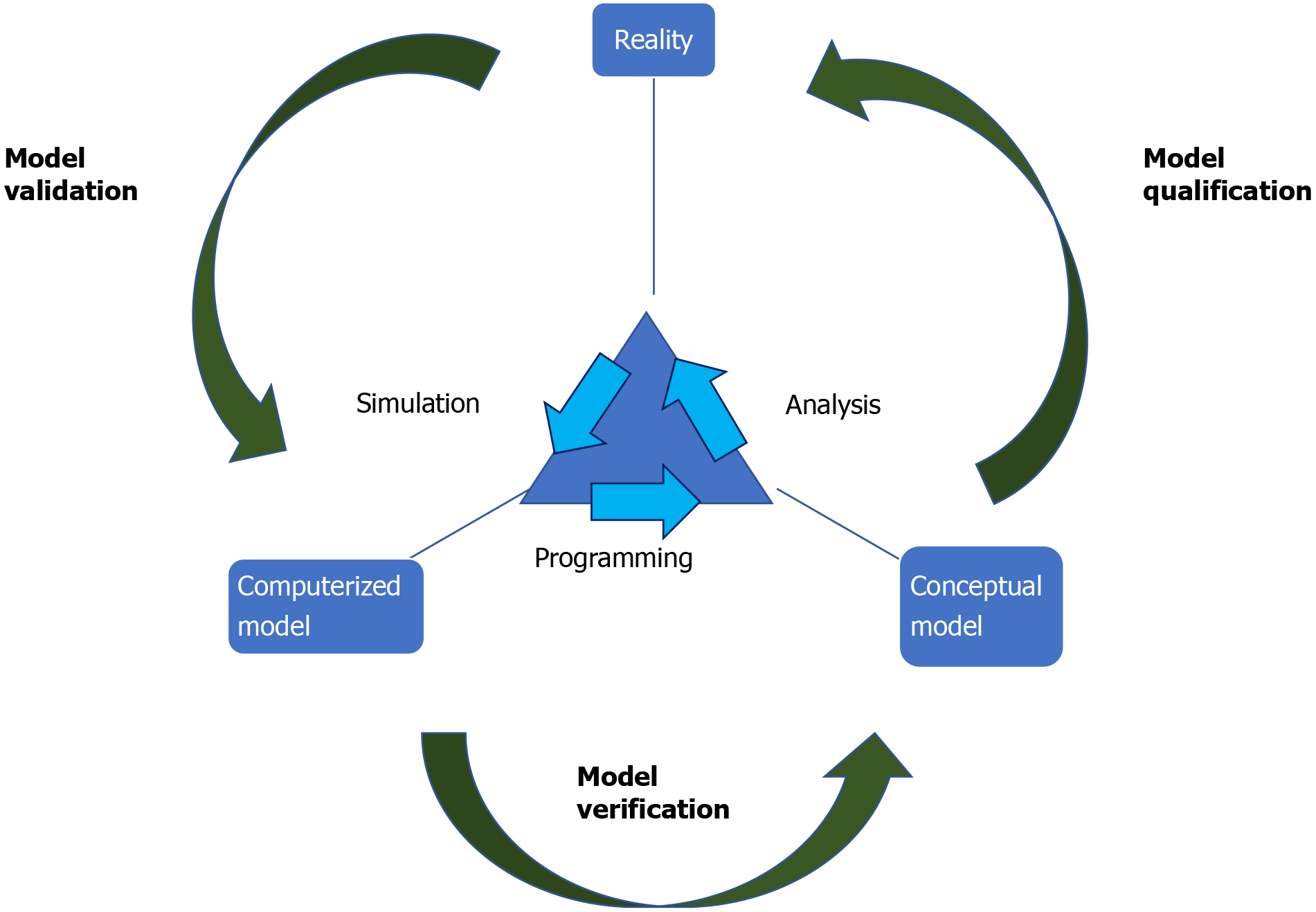Copyright
©The Author(s) 2021.
World J Crit Care Med. Jul 9, 2021; 10(4): 112-119
Published online Jul 9, 2021. doi: 10.5492/wjccm.v10.i4.112
Published online Jul 9, 2021. doi: 10.5492/wjccm.v10.i4.112
Figure 1 A directed acyclic graph for stroke patients that link concepts through Bayesian networks built from an underlying understanding of disease processes.
Orange boxes represent concepts, orange solid lines represent actionable factors, dashed red lines represent semi-actionable factors, arrows represent Bayesian connections between different variables. O2: Oxygen; CO2; Carbon dioxide; BP: Blood pressure; Na: Sodium.
Figure 2 A directed acyclic graph for acute brain failure that links concepts through Bayesian networks built from an underlying understanding of disease processes.
Orange boxes represent concepts, orange solid lines represent actionable factors, dashed red lines represent semi-actionable factors, arrows represent Bayesian connections between different variables. MAP: Mean arterial pressure; CPP: Cerebral perfusion pressure; NH3: Ammonium; Na: Sodium; BUN: Blood urea nitrogen; Ca: Calcium; O2: Oxygen; ABF: Acute brain failure; CNS: Central nervous system.
Figure 3 Accurate verification and validation of the model using the iterative steps of programming, simulation, and analysis[39].
- Citation: Dang J, Lal A, Flurin L, James A, Gajic O, Rabinstein AA. Predictive modeling in neurocritical care using causal artificial intelligence. World J Crit Care Med 2021; 10(4): 112-119
- URL: https://www.wjgnet.com/2220-3141/full/v10/i4/112.htm
- DOI: https://dx.doi.org/10.5492/wjccm.v10.i4.112











